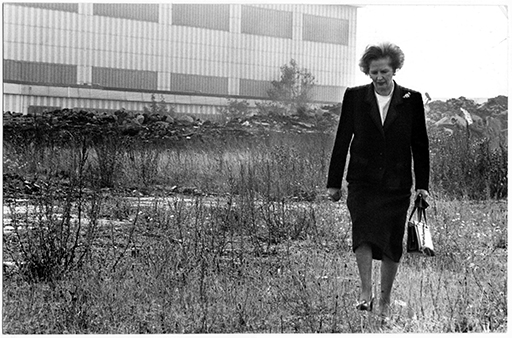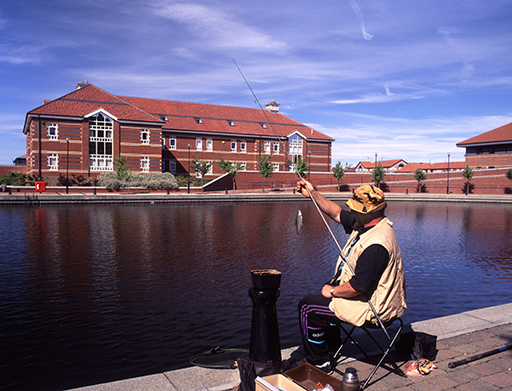3 Disunited England, divided London?
The referendum vote on 23 June 2016 highlighted key aspects of the disconnection between the London city region and the rest of England.
As discussed earlier, all of England’s regions outside London recorded a vote to leave the EU, although a majority in most of the larger (more cosmopolitan) cities voted for the UK to remain a member. A majority also voted to leave in Wales, although there were majorities to remain in Northern Ireland and Scotland, where the politics are very different. Of course, the regions and nations should not be seen as homogenous entities and there was significant variation between and within them. But what matters here is to recognise that the regional pattern of voting did reflect patterns of uneven development within the UK. Paradoxically, perhaps, that helped to explain the outcome in Northern Ireland and Scotland. A Remain vote reflected the linkages to another economic and political entity in the case of Ireland, and in the case of Scotland a readiness to develop a more autonomous (and possibly even independent) relationship with Europe that went beyond the UK.


But in England and Wales in a sense the vote was a rejection of the existing set of arrangements, even if the nature of the alternative was not clear. In many of the older industrial (and deindustrialising or post-industrial) regions, the European Union (EU) and its precursors had been active participants in the process of restructuring and consolidation that shaped their changing regional economies. The payments made through various regional development schemes hardly helped to compensate for those shifts. To put it at its most modest, people living in these regions had little reason to feel positively about the EU. The referendum threw up a strange alliance between those in the Conservative Party’s rural and suburban heartlands (for whom traditional forms of social and political security were fading in a post-imperial age) and those in the deindustrialised regions for whom the promise of ‘Europe’ was always tarnished.
In this context the overwhelming evidence that the regions which voted to leave are the ones most dependent on trade with Europe, or indeed most reliant on grants from Europe, becomes irrelevant. The argument has been that those who have been ‘left behind’ by globalisation and the patterns of growth associated with it were those who voted to leave. Once, however, it is recognised that uneven development is a process which actively repositions places and people through forms of economic restructuring – in other words, a process in which there is a continuing relationship between the geographies of ‘growth’ and ‘decline’ – then a rather different set of conclusions can be drawn. The vote can be seen as a reaction to the process by which forms of spatial and social inequality are generated and maintained. London may be less reliant on the EU than some other regions of England, precisely because it is connected into much more extensive global networks. But voting to leave the EU was also a way of voting against the effects of uneven development driven through an economic and political system focused on London and the needs of its elites. Incidentally, this also raises some fundamental questions for those who see the English vote as representing the rise of a new English nationalism – it may do, but it also highlights the extent to which ‘England’ itself is fundamentally divided, rather than united around some clear cut nationalist agenda.
However, London, itself, is also deeply divided. London’s role as a financial centre has shaped its relationship with the rest of the UK, but it has also helped to construct a deeply divided city. Uneven development is a complex process to the extent that series of inequalities and exclusions go alongside the defence of privilege in the city and its region. As a result, there may also be a danger of failing sufficiently to recognise the ambiguity of London’s position. In emphasising the role of the elite two other aspects of change may be underplayed. The first is simply to recognise that the industrial sectors dominated by the elite (particularly business services, higher education, and the media, publishing and tech industries) require a workforce that is not reducible to that elite. London draws in young people from across the UK and beyond seeking to work in the new post-industrial industries that dominate within it, even as they face dramatically increased living costs in doing so. They may not be poor, but nor are they (yet) part of the elite.
The second is that non-elite transnational aspects of the London experience may be downplayed in this narrative. London’s success relies on the more mundane contributions of migrant labour and production. The white British population as defined by UK censuses has become a minority (as the number identifying as white British has declined from 60% to 45% between 1991 and 2011). The linkages and connections to elsewhere that are implied by such a population highlight what it means to imagine a global city region from below as well as above. Despite undoubted tensions, London is one of the places within which living with difference is a ‘taken for granted’ rather than an exceptional experience, being made up (as Stuart Hall puts it) of an intricate lattice of differences (Hall, 2006). In his book This is London, published in 2016, Ben Judah powerfully charts the experience of those who are often marginalised in stories of London’s domination by elites of one sort or another. He ranges across London’s neighbourhoods to tell the story of a global city’s underside, the poor and the excluded, struggling for survival.
While the outcome of the Brexit vote was undoubtedly a reaction to some of the concerns identified by Massey and others, it is also important to recognise the extent to which the vote in London was also a reflection of the emergence of forms of transnational and different cosmopolitan politics – in which those who live in London often (as the example of David Lammy illustrates) stress a London identity above a national one. These individuals are not necessarily members of a global elite (the divisions within London and the wider city region make it impossible to identify them in this way) which begins to open up the possibility of a different sort of political identity, within and beyond England and the UK.
Activity _unit4.3.1 Activity 3 Reflecting on your thoughts about London
Look back at the points you made in response to Activity 2. Have you changed your mind about the conclusions you drew there? Or have your views been confirmed by the evidence and discussion that you have read?
Feedback
London is the UK’s world city and in that role it has helped to maintain and reinforce patterns of inequality across the wider geography of the UK. The interests of its elites have tended to dominate political and economic decision-making, and that has been reflected in the patterns of infrastructural investment as well as the language of politics. But London is more than its elites – uneven development is complex and ambiguous, generating difference within as well as between regions and nations. The Remain vote in London was not just a vote of the elites (many of whom live in the wider South East): it was a vote of the young, the multicultural and the dispossessed as well as the privileged.
